Creating Pending orders
Video Transcript
Creating Pending orders
To place a pending order, you have to open the "Order" window. This can be done by the "Tools – New Order" menu command, the “New Order” button of the "Standard" toolbar, by pressing of F9, by the "New Order" command of the "Market Watch" and "Terminal – Trade" window context menus, as well as by double-clicking on the symbol name in the "Market Watch" window. "Pending Order" must be selected in the "Type" field of this window.
Further, a currency pair must be selected, the volume and values of Stop Loss and Take Profit orders must be specified. If necessary, a comment can be written in the field of the same name. In the "Pending Order" fields you have to select:
There are four types of pending orders available in the terminal:
Buy Limit – buy provided the future "ASK" price is equal to the pre-defined value. The current price level is higher than the value of the placed order. Orders of this type are usually placed in anticipation of that the security price, having fallen to a certain level, will increase;
Buy Stop – buy provided the future "ASK" price is equal to the pre-defined value. The current price level is lower than the value of the placed order. Orders of this type are usually placed in anticipation of that the security price, having reached a certain level, will keep on increasing;
Sell Limit – sell provided the future "BID" price is equal to the pre-defined value. The current price level is lower than the value of the placed order. Orders of this type are usually placed in anticipation of that the security price, having increased to a certain level, will fall;
Sell Stop – sell provided the future "BID" price is equal to the pre-defined value. The current price level is higher than the value of the placed order. Orders of this type are usually placed in anticipation of that the security price, having reached a certain level, will keep on falling.
To place a pending order, you have to open the "Order" window. This can be done by the "Tools – New Order" menu command, the “New Order” button of the "Standard" toolbar, by pressing of F9, by the "New Order" command of the "Market Watch" and "Terminal – Trade" window context menus, as well as by double-clicking on the symbol name in the "Market Watch" window. "Pending Order" must be selected in the "Type" field of this window.
Further, a currency pair must be selected, the volume and values of Stop Loss and Take Profit orders must be specified. If necessary, a comment can be written in the field of the same name. In the "Pending Order" fields you have to select:
- Type – select a type of pending order: Buy Limit, Buy Stop, Sell Limit, or Sell Stop;
- At price – set the price level at which the order must trigger;
- Expiry – set the expiry time of the order. If the order has not triggered by this time, it will be deleted automatically. Order may not expire earlier than in 10 minutes.
There are four types of pending orders available in the terminal:
Buy Limit – buy provided the future "ASK" price is equal to the pre-defined value. The current price level is higher than the value of the placed order. Orders of this type are usually placed in anticipation of that the security price, having fallen to a certain level, will increase;
Buy Stop – buy provided the future "ASK" price is equal to the pre-defined value. The current price level is lower than the value of the placed order. Orders of this type are usually placed in anticipation of that the security price, having reached a certain level, will keep on increasing;
Sell Limit – sell provided the future "BID" price is equal to the pre-defined value. The current price level is lower than the value of the placed order. Orders of this type are usually placed in anticipation of that the security price, having increased to a certain level, will fall;
Sell Stop – sell provided the future "BID" price is equal to the pre-defined value. The current price level is higher than the value of the placed order. Orders of this type are usually placed in anticipation of that the security price, having reached a certain level, will keep on falling.


